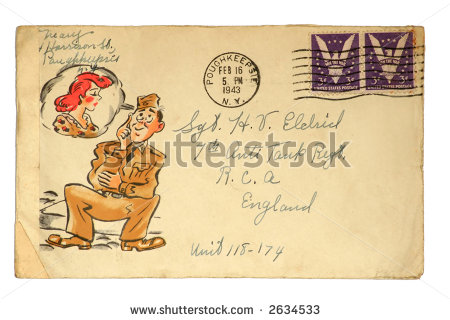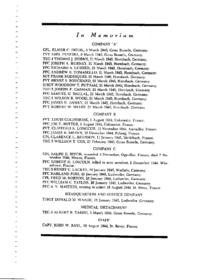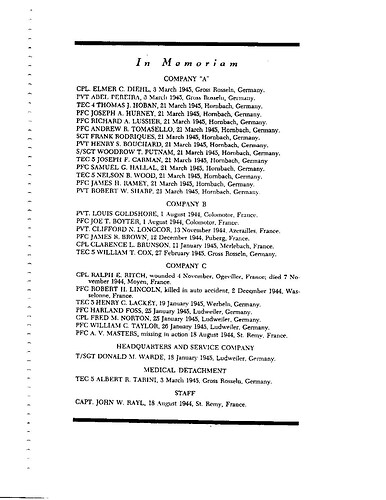Ah, you see, I haven’t a clue, not Pacific Theater and nothing to do with naval aviation.
And not to get too far off topic . . .
If so, that would be suggestive that the possible identification further up the page from Queens, New York is correct (and fits with the post office address).
You’d think so with a New York mailing address, but New York was just another collection points for mail to overseas units, it had nothing to do with a given soldier being from the city. An APO is an actual army unit, Army Post Office. Mail to army units, including the AAF, outside the continental went to the APOs which served specific units. There were seven collection points, New York City, Minneapolis, Miami, New Orleans, Presque Isle, Seattle and San Francisco. There mail was collected and sorted for further distribution to specific APO units. The vast majority of mail was processed at either New York or San Francisco. Generally, though there were undoubtedly exceptions, Minneapolis handled mostly central and western Canada and Alaska, Miami handled South America, the Caribbean basin, and the South Atlantic, including parts of southwest Africa; New Orleans handled Central America; Presque Isle handled eastern Canada; Seattle handled Alaska and parts of far west Canada; New York handled everything else to the east, the ETO and as far as India and central China and including north Africa and the MTO; San Francisco handled to the west including the entire Pacific theater(s) and POA including east China (as time went on), but excepting, for the most part, Alaska. Some APOs were served by more than one collection site (see below). There were, literally, hundreds of APOs.
Mail to army units would be addressed, for example, to someone stationed at Fort Chimo in Quebec
Named individual (rank plus name)
Unit designation
APO 691
Presque Isle, Maine
(Though this is one of the odd ones, APO 691 was also served by the New York collection site so one could use either city.)
Or, perhaps to someone in Chungking, China
Named individual (rank plus name)
Unit Designation
APO 879
New York, NY
(Unless it happened that one’s Chungking address was APO 908 which was served by San Francisco, but that didn’t start until December 1945; Chungking was also served by APO 1160 processed through the New York collection site. This can get very complicated)
As with the case of APO 403, it can be interesting to track progress across a geographic area by tracking the movements of the APO unit.
I would suspect that, unless one had an in somewhere with the Army’s internal mail system, a letter from a civilian in Great Britain to a US soldier whose unit is on the continent of Europe would have to mail it in Great Britain, it would go all the way back to specified stateside collection point where it would be resorted for distribution to the appropriate APO and thence back to that APO somewhere in the ETO.
Each US Army unit had a designated APO. I don’t have the USAAF list, nor anything below division level for the ground army, but for the HQs of commands listed . . .
6th Army Group - APO 23
12th Army Group - APO 655
15th Army Group - APO 777
First Army - APO 230
Second Army - APO 402
Third Army - APO 403
Fourth Army - APO 20
Fifth Army - APO 464
Sixth Army - APO 442
Seventh Army - APO 758
Eighth Army - APO 343
Ninth Army - APO 339
Tenth Army - APO 357
Fifteenth Army - APO 408
First Airborne Army - APO 740
I Corps - APO 301
II Corps - APO 19
III Corps - APO 303
IV Corps - APO 304
V Corps - APO 305
VI Corps - APO 46
VII Corps - APO 307
VIII Corps - APO 308
IX Corps - APO 309
X Corps - APO 310
XI Corps - APO 471
XII Corps - APO 301
XIII Corps - APO 463
XIV Corps - APO 453
XV Corps - APO 436
XVI Corps - APO 197
XVIII Corps - APO 109
XIX Corps - APO 270
XX Corps - APO 340
XXI Corps - APO 101
XXII Corps - APO 250
XXIII Corps - APO 103
XXIV Corps - APO 235
1st Cavalry Division - APO 201
2nd Cavalry Division - APO 435
1st Armored Division - APO 251
2nd Armored Division - APO 252
3rd Armored Division - APO 253
4th Armored Division - APO 244
5th Armored Division - APO 255
6th Armored Division - APO 256
7th Armored Division - APO 257
8th Armored Division - APO 258
9th Armored Division - APO 259
10th Armored Division - APO 260
11th Armored Division - APO 261
12th Armored Division - APO 262
13th Armored Division - APO 263
14th Armored Division - APO 446
16th Armored Division - APO 412
20th Armored Division - APO 444
1st Infantry Division - APO 1
2nd Infantry Division - APO 2
3rd Infantry Division - APO 3
4th Infantry Division - APO 4
5th Infantry Division - APO 5
6th Infantry Division - APO 6
7th Infantry Division - APO 7
8th Infantry Division - APO 8
9th Infantry Division - APO 9
10th Infantry Division - APO 24
25th Infantry Division - APO 25
26th Infantry Division - APO 26
27th Infantry Division - APO 27
28th Infantry Division - APO 28
29th Infantry Division - APO 29
30th Infantry Division - APO 30
31st Infantry Division - APO 31
32nd Infantry Division - APO 32
33rd Infantry Division - APO 33
34th Infantry Division - APO 34
35th Infantry Division - APO 35
36th Infantry Division - APO 36
37th Infantry Division - APO 37
38th Infantry Division - APO 38
40th Infantry Division - APO 40
41st Infantry Division - APO 41
42nd Infantry Division - APO 411
43rd Infantry Division - APO 43
44th Infantry Division - APO 44
45th Infantry Division - APO 45
63rd Infantry Division - APO 410
65th Infantry Division - APO 200
66th Infantry Division - APO 454
69th Infantry Division - APO 417
70th Infantry Division - APO 461
71st Infantry Division - APO 360
75th Infantry Division - APO 451
76th Infantry Division - APO 76
77th Infantry Division - APO 77
78th Infantry Division - APO 78
79th Infantry Division - APO 79
80th Infantry Division - APO 20
81st Infantry Division - APO 21
83rd Infantry Division - APO 83
84th Infantry Division - APO 84
85th Infantry Division - APO 85
86th Infantry Division - APO 450
87th Infantry Division - APO 448
88th Infantry Division - APO 88
89th Infantry Division - APO 89
90th Infantry Division - APO 90
91st Infantry Division - APO 91
92nd Infantry Division - APO 92
93rd Infantry Division - APO 93
94th Infantry Division - APO 94
95th Infantry Division - APO 95
96th Infantry Division - APO 96
97th Infantry Division - APO 445
98th Infantry Division - APO 98
99th Infantry Division - APO 449
100th Infantry Division - APO 447
102nd Infantry Division - APO 102
103rd Infantry Division - APO 470
104th Infantry Division - APO 104
106th Infantry Division - APO 443
11th Airborne Division - APO 468
13th Airborne Division - APO 333
17th Airborne Division - APO 452
82nd Airborne Division - APO 469
101st Airborne Division - APO 472
10th Mountain Division- APO 345
Americal Division - APO 716
Looks like I got a bit carried away.





